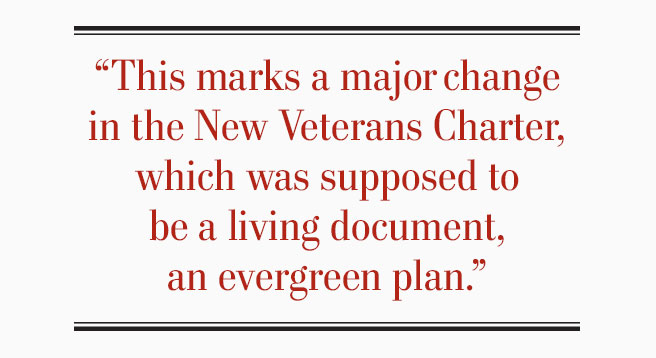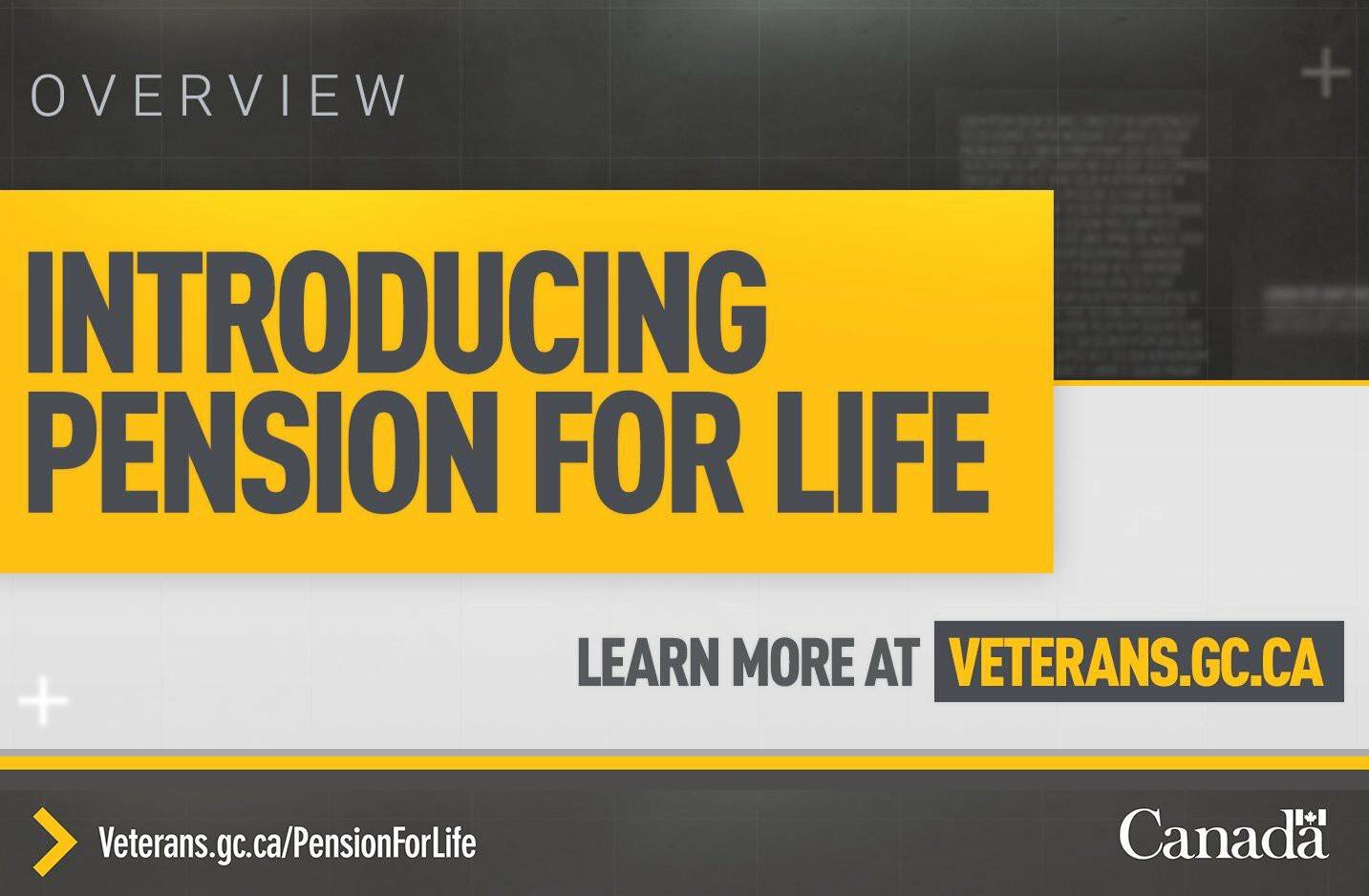The Royal Canadian Legion has given cautious approval of the plan to return to lifelong pensions for Canada’s most severely disabled veterans by the spring of 2019.
Making good on a Liberal Party promise to have an announcement by the end of 2017, Veterans Affairs Minister Seamus O’Regan made the announcement on Dec. 20 at a news conference at National Defence Headquarters in Ottawa.
“The Pension for Life plan offers key components that may provide improved income support and stability to our injured veterans,” said Dominion President David Flannigan. “However, without full details of the plan implementation, we need to wait and see how this progresses.”
The plan is built around three key pillars: a monthly tax-free payment to recognize pain and suffering caused by a service-related disability; income replacement for veterans experiencing trouble returning to work; and a suite of services and benefits to help veterans in a wide range of areas, including education, employment and physical and mental health.
The package is expected to cost approximately $3.6 billion between 2017 and 2022.
“We are addressing concerns made by the veterans and military communities by allowing those with a service-related injury or illness to determine the best form of compensation that works for them and their families,” said O’Regan.
However, these changes will not come into effect until April 1, 2019. “We think we need that much time to get legislation passed and to ensure that the staff of Veterans Affairs Canada is ready for this change,” said O’Regan. “If I could make it happen sooner, I would.”
The main item in the package is the Pension for Life (PFL), which will replace the disability award that is now granted in a lump sum or in annual installments. It will be replaced by a monthly tax-free payment to recognize pain and suffering up to a maximum monthly amount of $2,650.
To that will be added a taxable income replacement for veterans who are experiencing barriers to returning to work after military service. This will represent 90 per cent of their pre-release salary. Veterans may also be eligible for an additional one per cent career-progression factor for each year, in recognition of promotions the veteran would have received if he or she had remained in the military. The benefit will stay in place until the veteran reaches 20 years of service or age 60.
The third part of the package will be a simplification and combination of existing programs to help veterans transition to civilian life.
The most severely injured veterans will also be eligible for additional non-taxable compensation for pain and suffering. These will be awarded in three grades. Grade 1 will allow for a monthly benefit of $1,500, while Grade 2 will be for $1,000 and Grade 3 for $500. The levels are determined by the extent of the veteran’s impairment or barrier to re-establishment.
The Income Replacement Benefit (IRB) will benefit those veterans participating in one of VAC’s rehabilitation programs. A veteran in the program will be re-evaluated before turning age 65 or after completion of a rehabilitation or vocational assistance program. If the permanent physical or mental health problem results in a Diminished Earnings Capacity (DEC), then the benefit will be extended for the veteran’s lifetime or until he no longer has a DEC. The IRB will continue after the rehabilitation plan but will be reduced to 70 per cent of the pre-age 65 amount for life.

Veterans who are receiving the IRB can also earn up to $20,000 a year with no adjustment to the IRB. After $20,000, there will be a dollar-for-dollar clawback.
The IRB combines six out of seven different income-support programs under the New Veterans Charter. “Before this change, veterans had to fill in six different applications, six different hoops to go through,” said O’Regan.
All veterans who received a disability award after the NVC came into effect in 2006 will be re-evaluated using the current standards. If the veteran accepted a lump-sum benefit, the amount would be compared to the benefit he would receive under the PFL program. The amount of the lump sum would be deducted and the remainder would be paid as a monthly payment for life.
If a veteran receiving IRB dies before the age of 65, the survivor may be eligible to receive a lump- sum amount equal to 24 months of the monthly amount of IRB. If the veteran dies after age 65, the survivor may be eligible to continue receiving 70 per cent of the monthly amount. This is an increase from the current rate of 50 per cent.
“This marks a major change in the New Veterans Charter, which was supposed to be a living document, an evergreen plan,” said O’Regan. “Up to now, the 2006 charter has been static.”
These changes mainly affect the most severely disabled veterans. VAC also noted that 80 per cent of the veterans receiving benefits are assessed at 30 per cent disabled or lower.
The Legion was involved in consultations that led to the NVC in 2006 and is represented on several advisory groups to the Veterans Affairs minister. The Legion did not directly help develop this new announcement.
Advertisement














